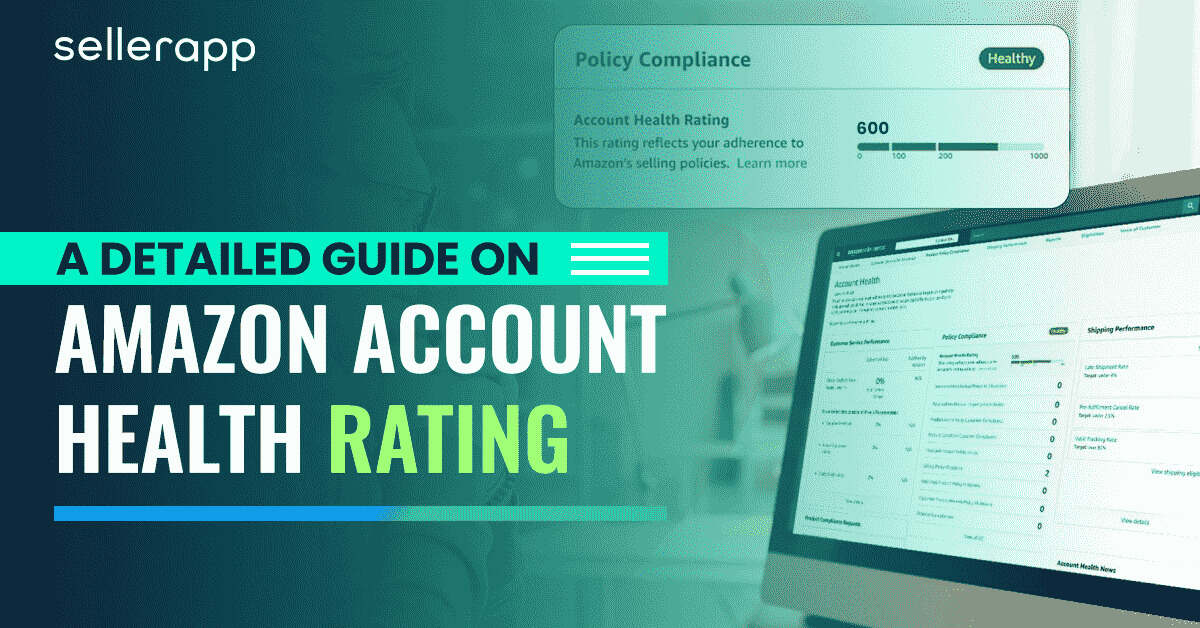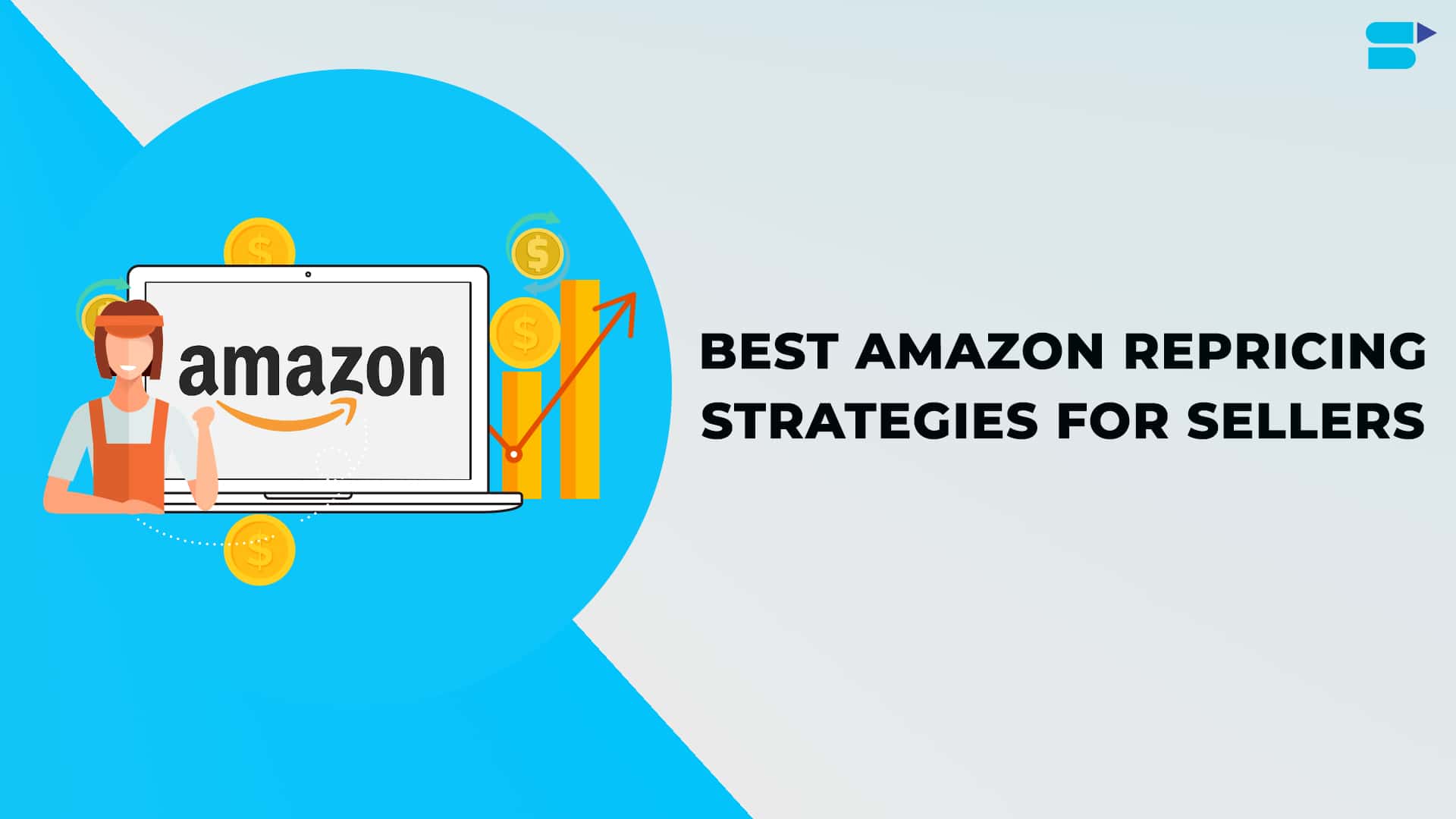Understanding Amazon Seller KPIs – Measure Your Marketplace Success

Anyone serious about selling on Amazon is likely to be aware of the importance of Amazon KPI (Key Performance Indicator) metrics. Online business demands quick adoption to changing trends and swift responses to your customers. This is important for any business selling on an online platform like Amazon. With a plethora of data and analytical solutions at their fingertips, sellers and brands can collect, handle, and analyze their Amazon seller KPIs effectively.
These KPIs for Amazon sellers and brands are allowing them to track data and generate meaningful insights that align with their long-term and short-term goals. Be it brand awareness, sales, acquiring new customers, or doing Amazon KPI analysis, a seller can leverage these metrics to get the right direction to the business.
In this post, let’s help you understand the importance of KPIs for Amazon sellers and examine the critical metrics for sellers and vendors, which you should be prioritizing on Amazon.
Quick Guide:
- Why are Seller KPIs important?
- How often should I track my e-commerce metrics?
- List of Amazon seller KPIs you should be monitoring?
- How to use Amazon Glance Views?
- Final Thoughts
Why are Seller KPIs Important?
Multichannel fulfillment has become mainstream in the current e-commerce era. With a dramatic increase in digital sales channels and a rise in the number of competitors in different niches, it is essential to do a KPI analysis for your business. If you have your digital storefront and are selling on Amazon, the chances are high that you might understand the importance of Amazon KPI metrics. Besides, e-commerce makes it hard to separate your inventory management from your sales or sales from marketing efforts. They are all tied together, and it gets hard to track the performance. This is the reason why we need to bring all the metrics together. Tracking the marketing, sales, and inventory metrics will help you regulate the overall costs of the business.
On the other hand, Amazon seller KPIs are essential to maintain good account health and improve your seller performance. Amazon as a sales channel has changed dramatically over the last few years, so have the sellers on this marketplace. For the best part of the previous decade, sellers can track their KPIs using the seller central account.
How Often Should I track My E-commerce Metrics?
You might be wondering how often we need to monitor your seller metrics. Well, the answer depends on your KPIs and business objectives.
There are KPIs that need to be tracked weekly, bi-weekly, monthly, and quarterly. Let’s take a look at them.
Weekly – There are specific metrics that demand constant attention and need to be tracked every week. These include organic traffic for your listings, impressions, and clicks generated.
Bi-monthly– If you want to get a larger sample size for your KPIs, tracking them bi-monthly is the best option. This larger sample size will have lesser variations and deviations in the data. Few of them include cost per acquisition, the average cost per value, etc.
Monthly – Monthly reports are apt for identifying purchase patterns, understanding marketing efforts. These KPIs can be related to your Buy Box views, cart abandonment rate, etc.
Quarterly – If you want to refine your long-term strategies, you need to track certain KPIs every quarter. Quarterly reports and metrics help you align your performance with your business objectives. Product relationship (which products are viewed to grow cross-selling tactics), customer relationship value (CLV), product affinity (which products are purchased together to come up with cross-promotion strategies) are a few of them.
Often, it is important to determine your goals and define your KPIs ahead.
List of Amazon Seller KPIs You Should be Tracking
The majority of the sellers look at the basic metrics that Amazon provide that include:
- Sales
- Profit
- Inventory (on hand)
Though these metrics are the cornerstones for your business, they cannot give you an in-depth analysis of your Amazon business. They are great to track if you are just starting. However, these will not give you the right direction to track your business objectives in a long run. You need to have a strategic overview and understanding of how to do Amazon KPI analysis to scale your business.
Let’s dive into a few of the Amazon KPIs that aid your business growth.
Few of the typical Amazon seller KPIs include:
Conversion rate or Unit session percentage:
Amazon defines unit session percentage as the number of units sold per number of sessions on your product page. These sessions are the number of visits calculated within 24 hours. Multiple views will be considered as a single session.
Inventory performance index:
One of the latest editions to Amazon seller KPIs is the Inventory performance index. This metric determines how well you are managing your inventory and stocking up products that are in demand. The score ranges from 0 to 1000. A score below 350 indicates that your account has issues, and you need to improve it. A score above 400 indicates that your account is performing well.
You need to monitor your account health to keep an eye on the Amazon inventory dashboard and act upon suggestions that Amazon has to offer.
Order defect rate:
Amazon uses Order defect rate to measure sellers’ customer service performance. Order defect rate mainly depends on negative feedback left by buyers on the Amazon platform, A-Z claim, and chargeback claim left by buyers. In case the claims are fraudulent, Amazon protects the sellers from such fraudulent chargebacks. Amazon sets the bar high for this KPI. It allows the order defect rate under 1%, past this number, you could face a warning, and the chances are high for your account to get suspended.
Perfect order percentage:
One should target to get the perfect order percentage. It means orders are accepted, processed, and fulfilled as they should be. You need to track your products in the inventory, packaging, and shipping them to the customer to maintain a perfect order percentage.
What is Amazon Glance Views?
We have observed a lot of confusion among sellers regarding Amazon’s Glance view metric. So, let’s first discuss what this metric means and how to interpret it.
How to use Amazon Glance views?
Amazon Glance views give the number of times a product detail page is viewed. Sellers and many vendors may often confuse this metric with impressions. While impressions are the number of views of a specific element like advertising, customer glance views help you understand how many viewers are interested in your product. Besides, there are multiple ways to interpret Glance views.
Amazon uses glance views to understand your product demand. More demand for the product results in increased purchase orders.
Glance views allow you to do the following Amazon KPI analysis.
Product conversion rate
The product conversion rate gives you the details of how many buyers purchased your product after landing on your product page.
Product conversion rate = Total Orders/ Customer Glance views
% Buy Box fast track (for vendors)
This metric is exclusive for Amazon vendors. It gives you how frequently a fast-track offer is included on the product page.
% Buy Box fast track = (Glance views with a fast track offer / Total customer glance views)*100
% Replenishable Buy Box fast track (for vendors)
This is another KPI for vendors on Amazon. This metric gives the frequency that the Fast Track offer is shown to the customers on replenishable items.
% Replenishable Buy Box fast track = (Fast Track customer glance views on Replenishable Items / Total customer glance views on Replenishable Items)*100
%Replenishable Out of Stock
Replenishable out of stock is an essential metric that helps you to know the percentage of sales that you missed out on due to the product or item being out of stock.
%Replenishable out of stock = (No. of Glance views when the product is out of stock/Total no. of glance views) * 100
% Views on non-replenishable items – For book vendors
This metric is exclusive for Amazon book vendors. % Views on non-replenishable items help you identify the titles which can be moved to the manufactured-on-demand process as the shoppers are interested in the item.
% Views on non-replenishable items = (Customer glance views on non-replenishable product/ Total customer glance views of the product)*100
Final Thoughts
So, that’s all about KPIs for Amazon sellers. These are the few tips to define your Amazon KPIs analysis. We know every business is unique, and the list of KPI recommendations varies with the type of business and goals of individual teams. Tracking these KPIs will boost your Amazon account health in the long run and help you to stay in the good books of Amazon.
Additional Read:
3 Things Amazon Sellers Need to Know











Verde
July 5, 2021Excellent blog regarding amazon seller KPIs. Thank you for sharing.
Arishekar N
August 13, 2021Glad you like it.